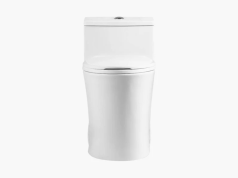Water damage to walls is a common issue faced by homeowners, often resulting from leaks, floods, or plumbing issues. Untreated water damage can result in the growth of mold, instability in the structure, and loss of the aesthetics. Repairing a water-damaged wall requires careful assessment, preparation, and execution. In this article, we’ll discuss step-by-step instructions on how to repair a water-damaged wall, as well as the importance of hiring a water damage restoration company Suffolk County for more severe cases.
Assessing the Damage
Before beginning any repairs, it’s crucial to assess the extent of the water damage to the wall. Look for signs of water staining, peeling paint or wallpaper, soft spots, and mold growth. Identify the source of the water damage and address any ongoing leaks or moisture issues to prevent future damage.
Gathering Materials and Tools
To repair a water-damaged wall, you’ll need the following materials and tools:
- Protective gear (gloves, goggles, mask)
- Utility knife
- Drywall saw
- Screwdriver
- Joint compound
- Drywall tape
- Sandpaper
- Primer
- Paint
Step-by-Step Repair Process
- Remove Damaged Material: To gently remove any damaged plaster or drywall, use a utility knife or drywall saw. Be sure to cut out the affected area until you reach dry, stable material. Remove any insulation or other materials behind the wall as needed.
- Inspect the Studs: Once the damaged material has been removed, inspect the wall studs for signs of water damage or mold growth. Replace any compromised studs to ensure the structural integrity of the wall.
- Dry Out the Area: To stop mold development, it’s imperative to completely dry out the damaged area before starting any repairs. Use fans, dehumidifiers, or moisture meters to ensure the area is completely dry.
- Apply Joint Compound and Tape: Once the area is dry, apply joint compound to the seams and joints where the new drywall meets the existing wall. Using a putty knife, smooth out the compound and cover it with drywall tape. Before continuing, let the compound entirely dry.
- Sand and Smooth: Use fine-grit sandpaper to smooth the area once the joint compound has dried. Be sure to feather out any rough edges or uneven spots for a seamless finish.
- Prime and Paint: To guarantee that the paint adheres properly, prime the repaired area. After the primer dries, paint the wall to blend in with the surroundings. Before evaluating the finished product, let the paint dry fully.
The Role of a Water Damage Restoration Company in Suffolk County
While minor water damage to walls can often be repaired by homeowners, more severe cases may require professional intervention. A reputable water damage restoration company in Suffolk County can provide the expertise, equipment, and resources needed to address extensive water damage and ensure thorough restoration. These experts possess the necessary skills and experience to evaluate the degree of damage, apply efficient drying methods, and return the impacted region to its pre-damaged state.
In addition to repairing water-damaged walls, a water damage restoration company can also provide comprehensive services such as water extraction, structural drying, mold remediation, and odor removal. By entrusting the restoration process to experienced professionals, homeowners can minimize the risk of further damage and expedite the recovery process.
Conclusion
Repairing a water-damaged wall requires careful assessment, preparation, and execution. By following the step-by-step instructions outlined in this article, homeowners can effectively address minor water damage and restore their walls to their original condition. For more extensive water damage, it’s essential to enlist the services of a reputable water damage restoration company in Suffolk County to ensure thorough and professional restoration. With the right approach and expertise, homeowners can successfully mitigate the effects of water damage and protect their property from further harm.











